In a nutshell: The Quranic Arabic alphabet has 28 letters, just like Modern Standard Arabic, but its pronunciation follows precise Tajweed rules for correct recitation. Each letter has unique articulation points, and mastering them prevents misinterpretation of Quranic verses.
As-salamu alaykum, my dear brothers and sisters in Islam. Today, we start with the very beginning, the foundation of Quranic Arabic: the Quranic Arabic alphabet.
Many of you, maybe you know some Arabic letters from before, maybe you learned some Modern Standard Arabic (MSA) in school or somewhere. This is good! But, you might be asking, “Is the Quranic alphabet the same as the regular Arabic alphabet?” and I want to explain it clearly for you.
The Quranic Arabic Alphabet:
Simply put, the Quranic alphabet is the Arabic alphabet. Quranic alphabet has 28 letters, just like the Modern Standard Arabic (MSA) alphabet.
However, what makes the Quranic letters unique is the way they are pronounced and applied in Quranic recitation. Each Quranic letter has specific articulation points (makharij) and characteristics (sifaat) that affect its sound.
For example, the letter ق (Qaf) is pronounced from the back of the tongue, whereas ك (Kaf) is pronounced from the middle of the tongue. Understanding these distinctions is crucial for correct Quranic recitation.
All Quranic Letters
Let’s look at these beautiful Quranic letters. As we mentioned there are 28 letters, each with its unique sound and shape. All of letters are:
(ا ب ت ث ج ح خ د ذ ر ز س ش ص ض ط ظ ع غ ف ق ك ل م ن و ہ ي)

Quranic Arabic Alphabet Chart
The following table provides a foundational reference for learners, consolidating information into a clear and accessible format.
| Letter | Name | Isolated Form | Initial Form | Medial Form | Final Form | Closest English Sound/Transliteration |
| ا | Alif | ا | ا | ـا | ـا | a as in Dad / ā |
| ب | Baa’ | ب | بـ | ـبـ | ـب | b as in bake / b |
| ت | Taa’ | ت | تـ | ـتـ | ـت | t as in take / t |
| ث | Thaa’ | ث | ثـ | ـثـ | ـث | th as in thin / th |
| ج | Jiim | ج | جـ | ـجـ | ـج | j as in joke / j |
| ح | H’aa’ | ح | حـ | ـحـ | ـح | deeper ‘h’ sound / ḥ |
| خ | Khaa’ | خ | خـ | ـخـ | ـخ | Scottish ‘ch’ / kh |
| د | Daal | د | د | ـد | ـد | d as in day / d |
| ذ | Thaal | ذ | ذ | ـذ | ـذ | th as in There / dh |
| ر | Raa’ | ر | ر | ـر | ـر | r as in Room / r |
| ز | Zaay | ز | ز | ـز | ـز | z as in zeal / z |
| س | Siin | س | سـ | ـسـ | ـس | s as in sake / s |
| ش | Shiin | ش | شـ | ـشـ | ـش | sh as in shake / sh |
| ص | Saad | ص | صـ | ـصـ | ـص | s as in Some / ṣ |
| ض | Daad | ض | ضـ | ـضـ | ـض | emphatic ‘d’ / ḍ |
| ط | Taa’ | ط | طـ | ـطـ | ـط | emphatic ‘t’ / ṭ |
| ظ | Thaa’ | ظ | ظـ | ـظـ | ـظ | emphatic ‘th’ or ‘z’ / ẓ |
| ع | ‘Ayn | ع | عـ | ـعـ | ـع | guttural stop / ‘ |
| غ | Ghayn | غ | غـ | ـغـ | ـغ | guttural ‘r’ / gh |
| ف | Faa’ | ف | فـ | ـفـ | ـف | f as in floor / f |
| ق | Qaaf | ق | قـ | ـقـ | ـق | deep ‘k’ sound / q |
| ك | Kaaf | ك | كـ | ـكـ | ـك | k as in kind / k |
| ل | Laam | ل | لـ | ـلـ | ـل | l as in Long / l |
| م | Miim | م | مـ | ـمـ | ـم | m as in make / m |
| ن | Nuun | ن | نـ | ـنـ | ـن | n as in none / n |
| ه | Haa’ | ه | هـ | ـهـ | ـه | h as in hat / h |
| و | Waw | و | و | ـو | ـو | w as in water / w |
| ي | Yaa’ | ي | يـ | ـيـ | ـي | y as in yes / y |
Pronunciation of Difficult Quranic Letters
Now, let’s talk about the sounds of Quranic Arabic Alphabet.
Some Arabic sounds are very similar to English sounds. But some are new to your ears, and it’s important to learn them correctly, especially when reading the Quran.
Even a small change in pronunciation can sometimes change the meaning of a word.
Let’s look at some sounds that might be a little different for you (Most examples from Surat al-Fatiha if you want to listen to it while reading):
1. How to Pronounce ح (Haa) in the Quranic Alphabet
ح (Haa) is a strong “h” sound that comes from the back of your throat. ح (Haa) is different from the regular English “h”. Think of ح (Haa) like a gentle clearing of your throat.
You can hear it in the word الْحَمْدُ (Al-Ḥamdu – All praise).
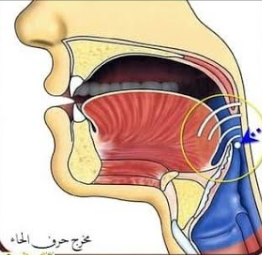
2. How to Pronounce ع (Ayn) in the Quranic Alphabet
ع (Ayn) is another sound that comes from the middle of your throat. ع (Ayn) is a unique Arabic sound that doesn’t have an exact equivalent in English. It takes a little practice to get it right.
You can hear it in the word نَعْبُدُ (Na’budu – We worship).

3. How to pronounce ص (Ṣaad) in the Quranic Alphabet
ص (Ṣaad) – This sounds like an “s” but it’s heavier and more emphatic. You pronounce ص (Ṣaad) with your tongue slightly touching the back of your upper teeth and making the sound feel “thicker”.
You can hear it in the word الصِّرَاطَ (Aṣ-Ṣiraaṭa – The path).
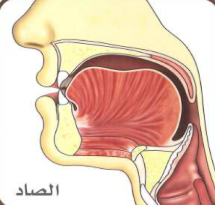
4. How to Pronounce ض (Ḍaad) in the Quranic Alphabet
ض (Ḍaad) is often considered one of the most unique Arabic sounds. ض (Ḍaad) is a heavy “d” sound made by touching the side of your tongue to your upper side teeth.
You can hear it in the word وَلَا الضَّالِّينَ (Wa laa aḍ-Ḍaalleen – Nor of those who have gone astray).
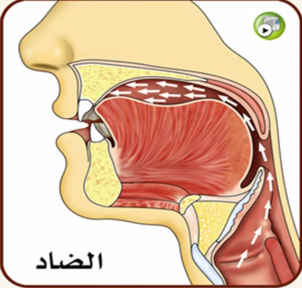
5. How to Pronounce ط (Ṭaa) in the Quranic Alphabet
ط (Ṭaa) is a heavy and emphatic “t” sound. Similar to Ṣaad, you make it feel “thicker”.
You can hear it in the word الصِّرَاطَ (aṣ-Ṣiraaṭa the straight path).

6. How to Pronounce ظ (Ẓaa) in the Quranic Alphabet
ظ (Ẓaa) is a heavy and emphatic “th” sound, like the “th” in “that” but heavier.
You can hear it in the word الْعَظِيمُ (Al-‘Aẓeem – The Most Great).

7. How to pronounce ق (Qaaf) in the Quranic Alphabet
ق (Qaaf) is a strong “k” sound that comes from the back of your throat, further back than the regular English “k”.
You can hear it in the word قُلْ (Qul – Say).
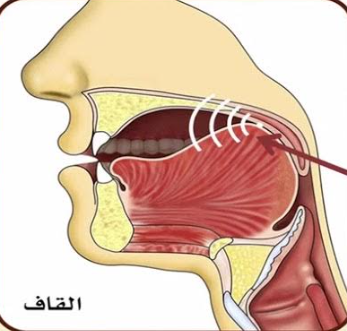
8. How to Pronounce غ (Ghayn) in the Quranic Alphabet
غ (Ghayn) sound is similar to the French “r” sound. غ (Ghayn) comes from the upper part of your throat.
You can hear it in the word غَيْرِ (Ghayri – Other than).
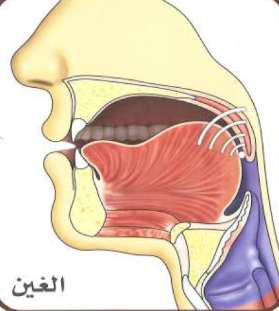
9. How to Pronounce خ (Khaa) in the Quranic Alphabet
خ (Khaa) is a breathy sound that also comes from the upper part of your throat. خ (Khaa) is like the “ch” in the Scottish word “loch”.
You can hear it in the word خَالِصَةً (Khaaliṣatan – Purely).
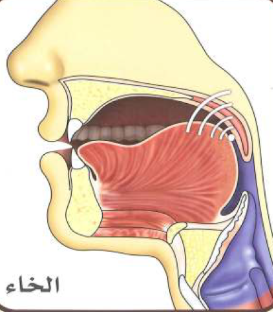
Don’t feel overwhelmed by these new sounds! It takes time and practice. The important thing is to listen carefully to how native Arabic speakers pronounce them.
At Quranica, our teachers are native Arabic speakers and Huffaz of the Quran. They can guide you and help you pronounce each letter correctly. They will repeat the sounds for you, show you how to move your mouth and tongue, and give you feedback to improve your pronunciation.
Join our Tajweed Course Today
Read more about: How to Learn Quranic Arabic? A 7-Step Guide
Quranic Alphabet Tajweed
Tajweed is the science of reciting the Quran with the utmost precision and beauty, as it was revealed to Prophet Muhammad (peace be upon him).
Quranic Alphabet Tajweed takes the basic pronunciation of the letters and elevates it to a higher level. It teaches us:
- How long to hold certain Quranic letters: Like the madd (مد – lengthening) in words like Qāl (قَال – he said).
- When to merge Quranic letters: Like the idgham (إدغام – merging) in min rabbihim (مِن رَّبِّهِم – from their Lord), where the noon (ن) sound merges into the ra (ر).
- When to pronounce a Quranic letter clearly: Like the izhar (إظهار – clarity) in man amana (مَنْ آمَنَ – whoever believes), where the noon (ن) sound is pronounced distinctly.
- When to make a nasal sound: The ghunnah (غنة) sound, like the sound that you make it in the letters meem (م) and noon(ن).
These are just a few examples. Tajweed is a vast and beautiful ocean, and we will explore it together, step by step in other articles and in our Tajweed Course, Insha’Allah. It’s Very important to hear the Correct sound of Ghunnah, to preform It Correctly.
Read more about: Quranic Tajweed Rules – Full Guide
How Quranica Can Help You Master Quranic Alphabet?
We know this can seem like a lot… It is a lot! But we make it easy, step-by-step, with experienced teachers who are Huffaz and experts in Tajweed.
We offer:
- Live, one-on-one classes: You will learn directly from a qualified teacher. They will correct your pronunciation, explain the rules of Tajweed, and guide you every step of the way.
- Structured curriculum: We have a carefully designed curriculum that takes you from the very basics of the Quranic Arabic alphabet to fluent recitation with Tajweed.
Interactive exercises and quizzes: We make learning fun and engaging, with interactive exercises to help you practice your pronunciation and understanding. - A Focus on your Goal: Whether you aim to simply read the Quran correctly, memorize portions of it, or even become a Hafiz yourself, Quranica’s courses are tailored to help you achieve your specific aspiration. We don’t just teach the alphabet; we nurture a lifelong relationship with the Quran.
Join our Tajweed Course Today
Conclusion:
The Quranic Arabic alphabet consists of 28 letters, identical to those in Modern Standard Arabic, but with distinct pronunciation rules vital for Quranic recitation. Each letter has specific articulation points (makharij) and attributes (sifaat) that shape its sound, making mastery of these nuances essential.
Some letters, like ح (Haa) and ع (Ayn), require throat-based pronunciation, while others, such as ص (Saad) and ض (Dhad), have emphatic qualities that alter their resonance. Proper pronunciation ensures accuracy in recitation, preventing unintended changes in meaning.
Tajweed further refines Quranic pronunciation, teaching rules like elongation (madd), merging sounds (idgham), and nasalization (ghunnah). Mastering these rules enhances fluency, beauty, and adherence to the Quran’s divine revelation. Dedicated courses, interactive exercises, and expert guidance help learners perfect their recitation step by step.
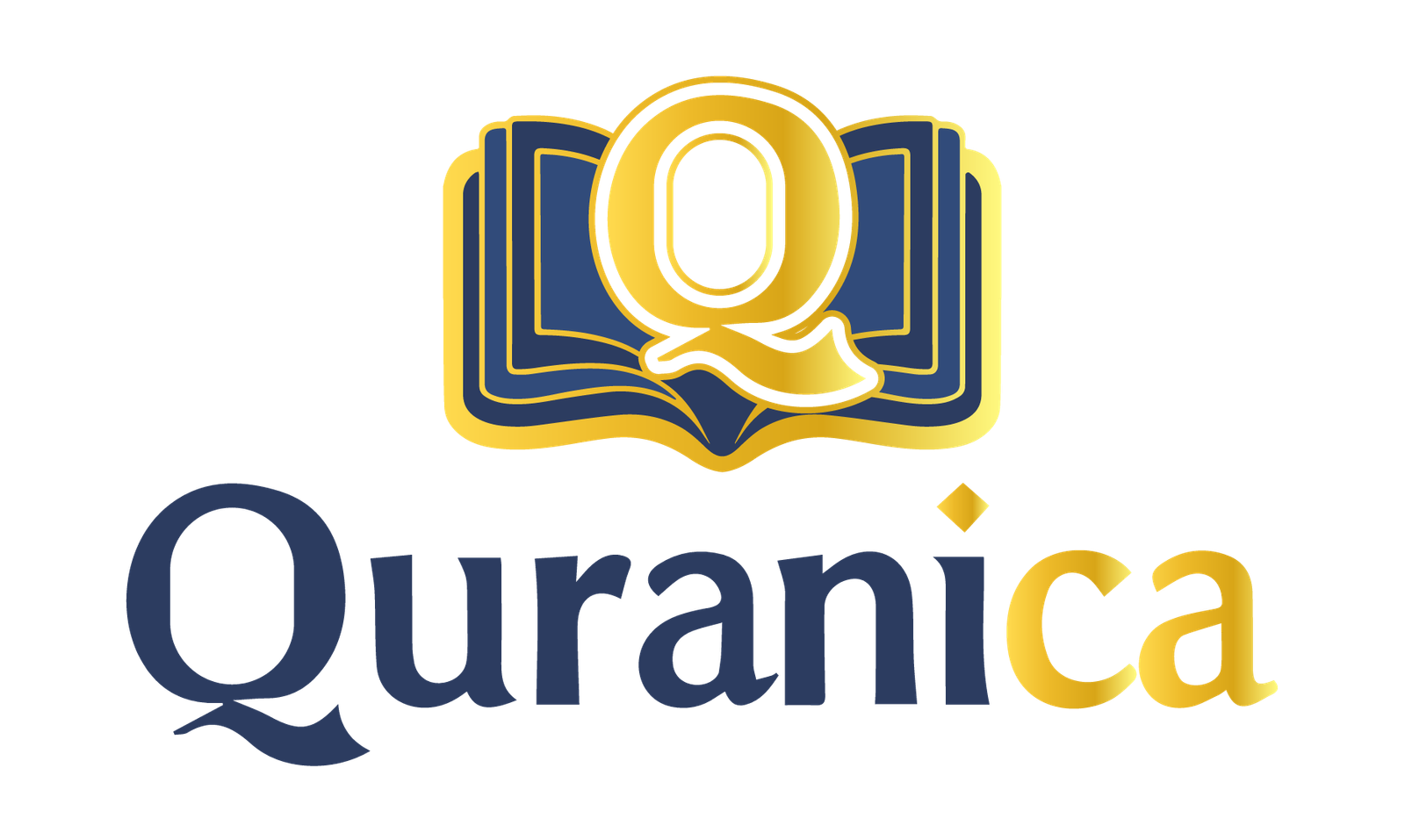





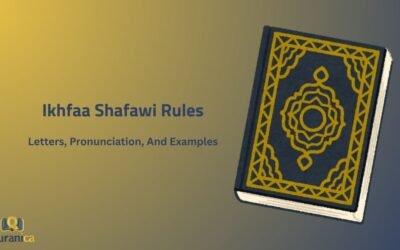

0 Comments